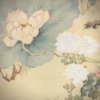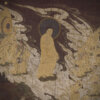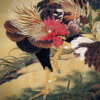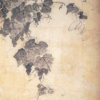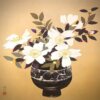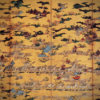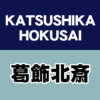Kōno Bairei: Central Figure in the Foundation of Modern Japanese Paintings in Kyōto
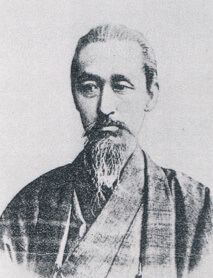
Kōno Bairei (1844-1895) learned the painting techniques of the Maruyama school from Nakajima Raishō, and later studied under Shiokawa Bunrin and mastered the brush techniques of the Shijō school.
Therefore, Bairei absorbed the sketching technique of Maruyama Ōkyo and the brushwork of Matsumura Goshun.
The sketching method of the Maruyama school is more like an illustrated book, a technique of faithfully reproducing an object, and originates from the idea that the painter’s subjectivity can be naturally expressed after the painting has reached the “pure maturity of sketching”. The brushwork of the Shijō school, on the other hand, has its origins in literati painting and emphasizes the intention of the brushwork, with a tendency to respect the artist’s subjectivity.
Pheasant and Chrysanthemums (Kikka Kyōji-zu)
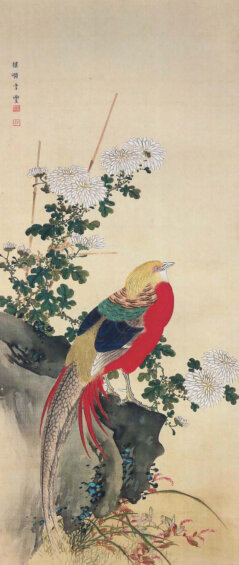
In this painting, both trends are clearly expressed. The expression of the pheasant shows the sketching technique of the Maruyama school, which can be seen in the depiction of the wings and tail. The bamboos supporting the chrysanthemums and the chrysanthemums and orchids show the soft lines of the brush, characteristic of the Shijō school.
Among the students of Bairei, some painters formed the modern Kyōto art scene, and his grand pupils were also active in the Kyōto art scene. Takeuchi Seihō, Kikuchi Hōbun, Tsuji Kakō, and Taniguchi Kōkyō were taught by Bairei and modernized Japanese painting in Kyōto, and many students were trained by these four artists. For example, Nishiyama Suishō, under Seihō’s tutelage, nurtured painters such as Dōmoto Inshō and Uemura Shōkō, who were key figures in the Kyōto art scene of the Shōwa period.
From this perspective, it can be said that Kōno Bairei was a central figure and benefactor in establishing the foundations of modern Japanese painting in Kyōto.

